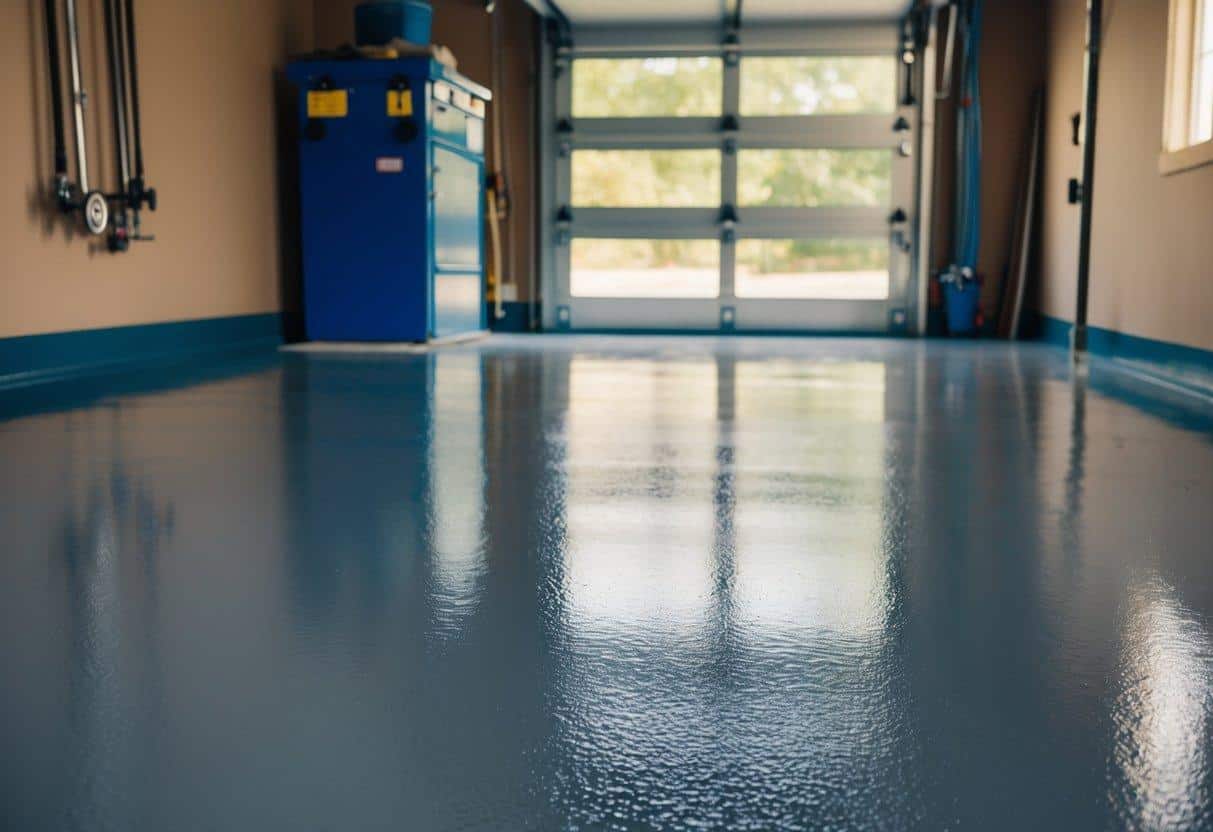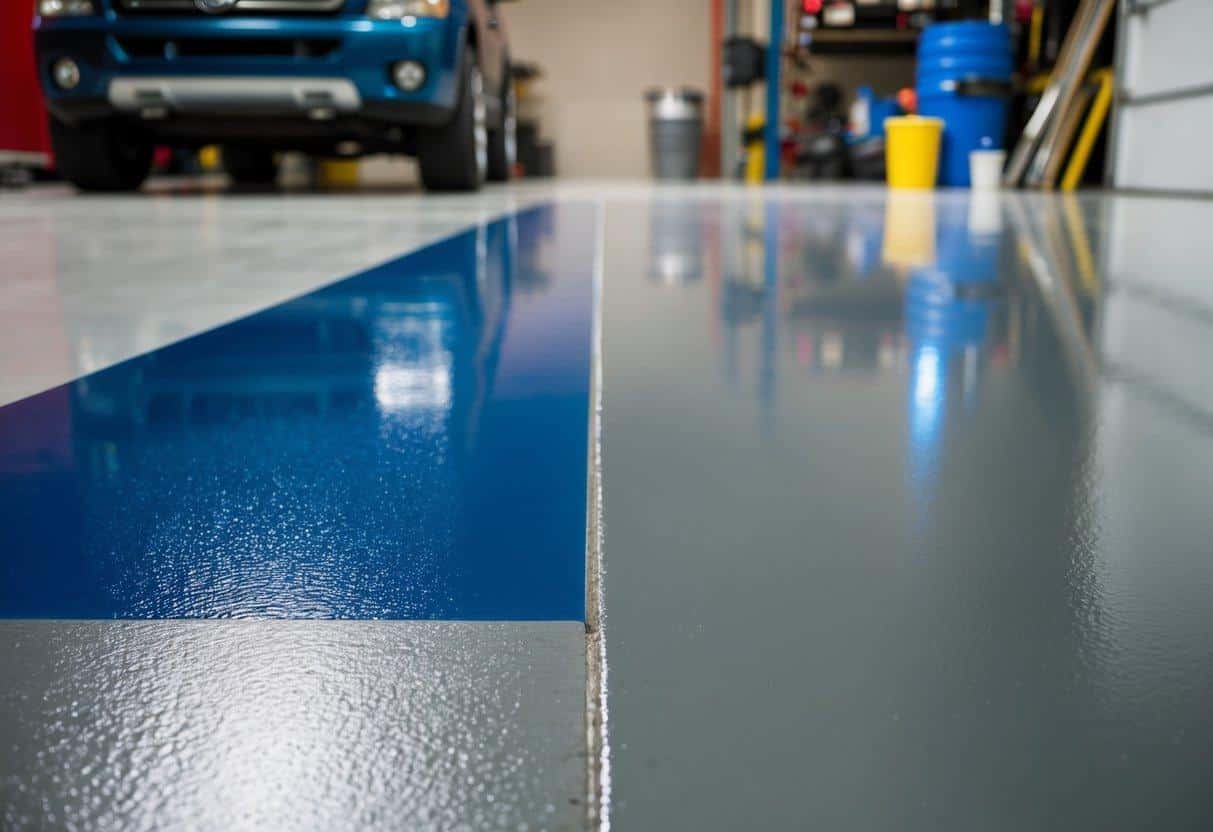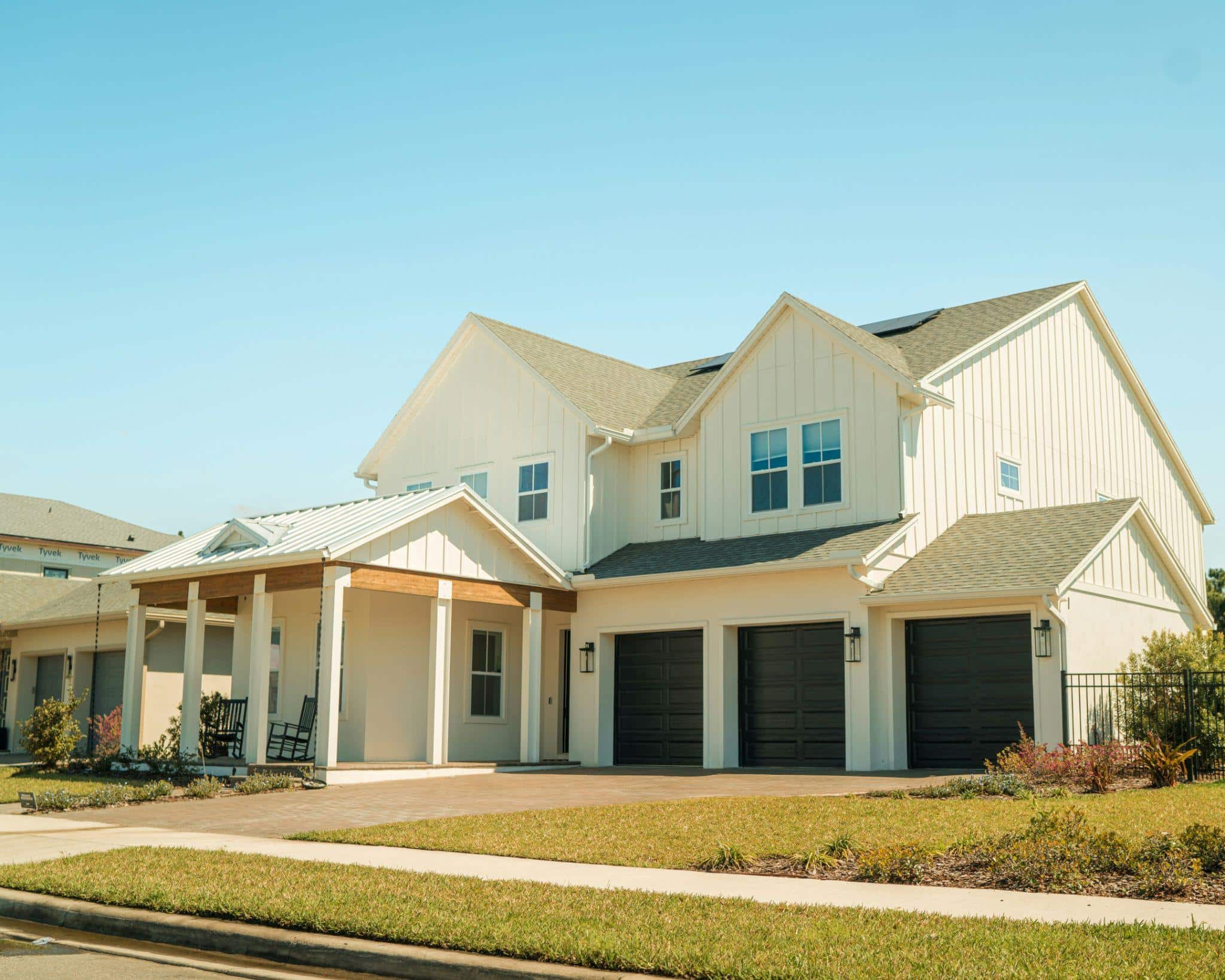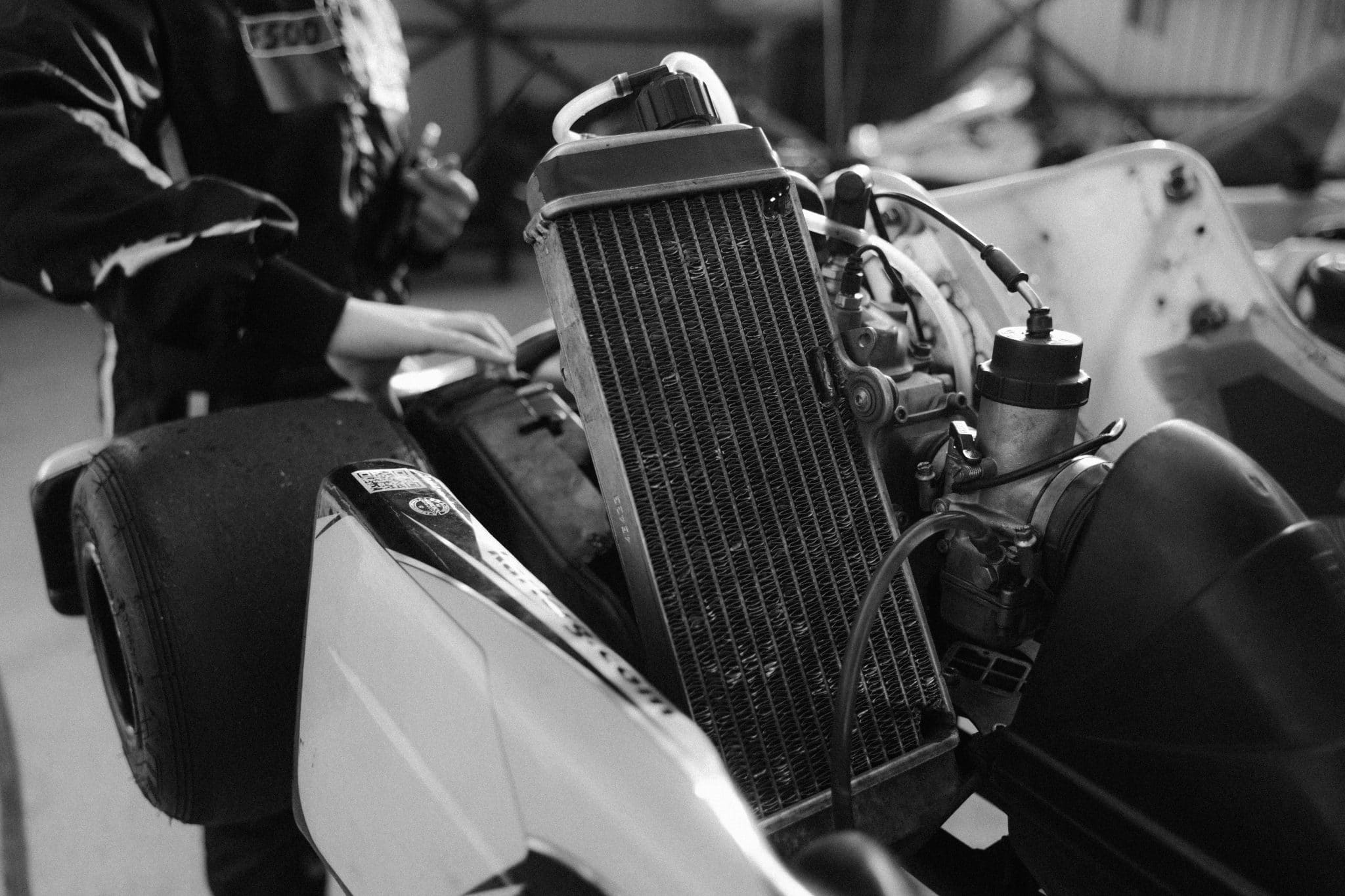When it comes to garage floor coatings, polyurea and epoxy are two popular choices. I’ve seen many homeowners struggle with this decision.
Both options offer unique benefits, but polyurea garage floor coating stands out in several key areas. Its durability and quick curing time make it a favorite among DIY enthusiasts and professionals alike.
Polyurea coatings are tougher and more flexible than epoxy. They resist chemicals, impacts, and temperature changes better, making them ideal for busy garages. This durability means your floor will look great and perform well for years to come.
While epoxy is cheaper, polyurea often proves to be better value in the long run. It dries faster, allowing you to use your garage sooner. Plus, it’s UV resistant, so it won’t yellow over time like some epoxy coatings can.
Key Takeaways
- Polyurea coatings offer superior durability and flexibility compared to epoxy
- Epoxy is more budget-friendly, but polyurea provides better long-term value
- Both options improve garage floor appearance and function, but polyurea excels in harsh conditions
Understanding the Basics
Polyurea and epoxy are two popular choices for garage floor coatings. They have different properties that affect how they’re made and applied.
Composition and Properties
Polyurea is an elastomer made from two parts that react quickly. It’s flexible and can stretch without cracking. This coating resists impacts and chemicals well. It’s also UV-stable, so it won’t yellow in sunlight.
Epoxy is made from resin and a hardener. When mixed, they form a tough plastic layer. Epoxy is hard and dense, making it great for heavy traffic. It sticks well to concrete and resists oil and other garage spills.
Both coatings protect concrete from stains and damage. They make floors easier to clean and look shiny. But polyurea is more elastic, while epoxy is more rigid.
Preparation and Application
Getting the floor ready is key for both coatings. I need to clean the concrete and fix any cracks. For epoxy, the floor must be completely dry. Polyurea can handle some moisture.
Epoxy often needs several coats. I mix the parts and have about 30 minutes to apply it before it starts to set. It takes days to fully cure.
Polyurea goes on fast. It sets in seconds and cures in hours. This quick process means less downtime for my garage.
I can buy DIY kits for both types. But for the best results, I might want to hire pros. They have the right tools and know how to prep the floor properly.
Comparative Advantages
Polyurea and epoxy both have their strengths as garage floor coatings. Let’s look at how polyurea stands out in key areas like durability, resistance, and curing time.
Durability and Longevity
Polyurea garage floor coatings are tough as nails. They can handle heavy loads and constant traffic without breaking a sweat. I’ve seen polyurea floors stay in top shape for years, even with daily use.
Polyurea resists impacts and scratches better than epoxy. It won’t chip or crack easily if you drop tools or move heavy gear. This means less damage and fewer repairs over time.
The coating also holds up well against oils, chemicals, and other spills common in garages. It’s easy to clean and doesn’t stain or deteriorate from exposure to these substances.
Resistance to Elements
Polyurea excels in handling different environmental conditions. It’s not fazed by UV rays, so it won’t yellow or fade in sunlight. This is great for garages with lots of natural light.
The coating also stands strong against moisture. It creates a tight seal that keeps water out, preventing damage to the concrete below. This is crucial in areas with high humidity or flood risks.
Polyurea can flex slightly with temperature changes. This means it’s less likely to crack or peel in extreme heat or cold. It maintains its bond with the concrete surface better than rigid coatings.
Curing Time and Flexibility
One of polyurea’s biggest perks is its rapid cure time. You can usually walk on it within hours of application. This means less downtime for your garage.
|
Coating Type |
Cure Time |
|---|---|
|
Polyurea |
4-6 hours |
|
Epoxy |
24-72 hours |
The quick curing also reduces the risk of dust or debris getting stuck in the coating as it dries.
Polyurea stays flexible after curing. This lets it handle small movements in the concrete without cracking. It’s ideal for garages in areas with soil movement or temperature swings.
The flexibility also helps absorb impacts better than hard epoxy coatings. This adds to its overall durability and longevity.
Aesthetic and Functional Considerations
Polyurea and epoxy garage floor coatings offer different looks and upkeep needs. Let’s check out how they stack up in terms of style and care.
Design and Appearance
Polyurea coatings give garage floors a sleek, modern look. I’ve seen them in many shades, from soft greys to bold blues. They have a smooth, glossy finish that catches the eye.
Epoxy coatings also come in lots of colours. But they can have a thicker, more textured feel. Some folks like to add flakes or chips to epoxy for a speckled effect.
Both options can make a garage look clean and sharp. But polyurea tends to keep its shine longer. It doesn’t yellow or fade as much in sunlight.
For a unique touch, I’ve seen garage owners use stencils with either coating. This can create cool patterns or even mimic the look of tile.
Maintenance and Upkeep
Polyurea is a breeze to clean. A quick sweep and mop usually does the trick. It resists stains from oil and chemicals better than epoxy.
Epoxy needs a bit more care. It can chip if heavy items are dropped on it. You might need to touch up spots now and then.
Both coatings make it easier to spot spills and dirt. This helps keep the garage tidy. However, polyurea’s smooth surface is often easier to wipe down.
For long-term care, polyurea wins out. It rarely needs to be redone. Epoxy might need a fresh coat every few years, especially in busy garages.
I’ve found that both options cut down on concrete dust. This means less mess tracked into the house.
Cost and Value Assessment

When looking at polyurea and epoxy garage floor coatings, it’s important to weigh up the costs and long-term value. I’ll break down the investment aspects and environmental impacts to help you make an informed choice.
Investment and Returns
Polyurea floor coating usually costs more upfront than epoxy. I’ve found that polyurea can cost $6-$12 per square foot, while epoxy ranges from $3-$7. For a typical single-car garage, polyurea might set you back about $2,000.
But here’s the kicker – polyurea often lasts longer. It can hold up for 15-20 years with proper care. Epoxy might need replacing after 5-10 years. So, while polyurea costs more now, it could save money over time.
Polyurea also resists UV rays better. This means it won’t yellow or fade as quickly as epoxy, keeping your garage looking fresh for years.
VOCs and Environmental Impact
Volatile organic compounds (VOCs) are chemicals that can harm health and the environment. Epoxy often has higher VOC levels than polyurea. This means polyurea is generally safer to apply and better for air quality.
Polyurea cures faster too. You can use your garage within 24 hours. Epoxy can take days to fully cure. This quick turnaround is handy for busy households or commercial spaces.
Both coatings are durable, but polyurea’s flexibility gives it an edge. It’s less likely to crack or chip, which means less maintenance and a longer lifespan.








